Tribal artists from 11 States are arriving in batches in Visakhapatnam to complete their works before they are transported to the Tribal Freedom Fighters Museum coming up at Tajangi, near Lambasingi in Chintapalli mandal
Walking through the hills and valleys of Chintapalli and motoring up the winding dirt roads of the interior areas of the Agency of Alluri Sitharama Raju district makes one wonder about the travails of tribal revolutionaries who had revolted against the British with crude weapons.
The Tribal Freedom Fighters Museum (TFFM) coming up at Tajangi, near Lambasingi in Chintapalli mandal, about 120 kilometres from Visakhapatnam city, plans to take visitors into the past by making them visualise the scenes as they walk through the artefacts, weapons and other materials used by the revolutionaries in their fight against the British. The TFFM is an offshoot of the vision of Prime Minister Narendra Modi to celebrate the unsung tribal freedom fighters from various parts of the country.
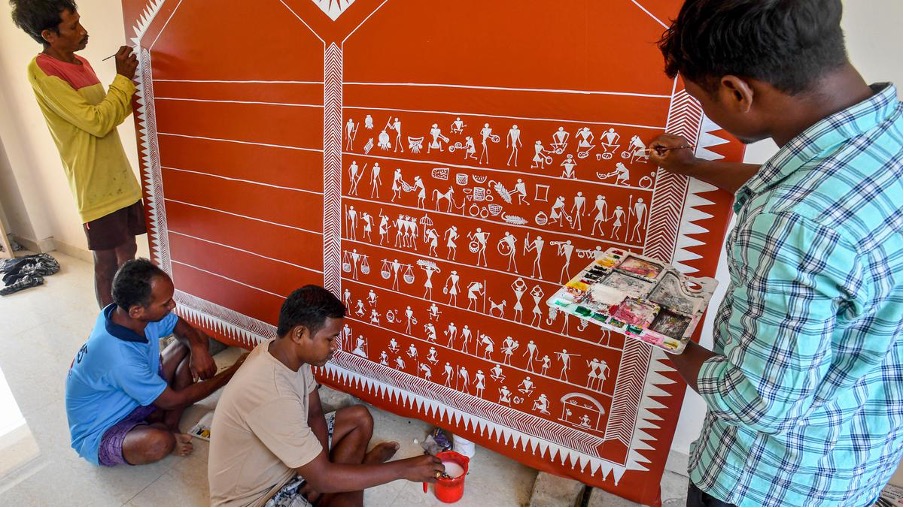
Lambasingi, which has earned the epithet Andhra Kashmir for registering sub-zero temperatures during the peak winter season, is poised to get the new tourist attraction soon. Being developed at a cost of ₹35 crore, the project is a joint venture of the Ministry of Tribal Affairs, Government of India, and the Government of Andhra Pradesh.
Tribal artists from various States in the country are presently engaged in the work of doing large paintings and artworks, reflecting their culture at the Tribal Cultural Research and Training Mission (TCRTM) at Rushikonda in Visakhapatnam. These paintings would be displayed at the museum.
The work on the construction of the museum at Tajangi, near Lambasingi village of Chintapalli mandal in ASR district, is progressing briskly. An extent of 21.67 acres of land was allotted for the construction of the museum. The museum will have an entrance plaza, a tribal haat with a restaurant, and an amphitheatre.
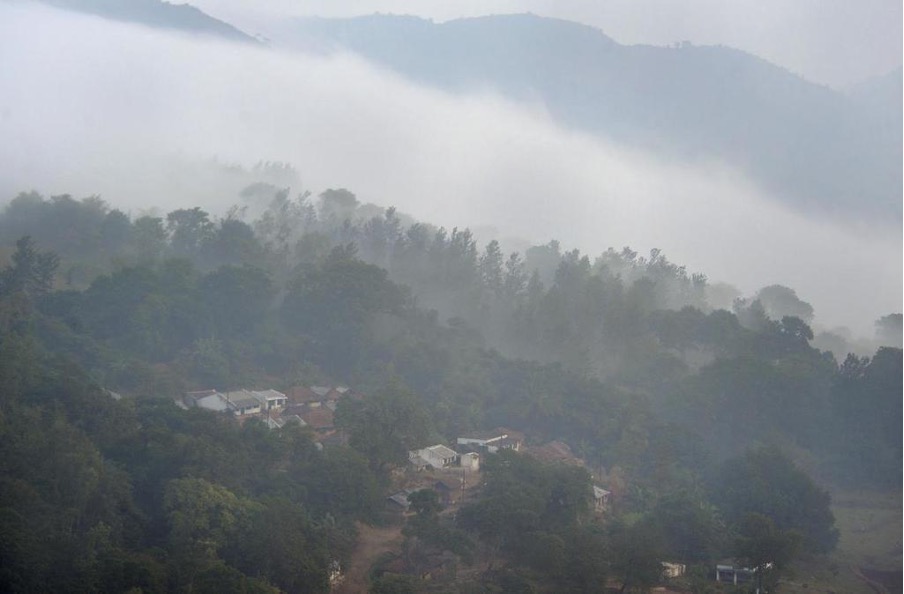
Some of the tribes like Konda Dora, Sarika and others, who had migrated from the Chintapalli region to Andhra and Pachipenta in Vizianagaram district and Jeypore, which was then in Vizagapatam district, and presently in Odisha are displaying objects, weapons and chains used by their ancestors.
The hills and valleys at Chintapalli and surrounding areas, in the combined Visakhapatnam district, are reminders of the historic Rampa Rebellion, one of the important tribal freedom movements against the British, led by the revolutionary freedom fighter Alluri Seetharama Raju.
The Rutherford Guest House at Lambasingi, which Rutherford had visited in 1924 to catch Alluri Sitharama Raju, is located about four kilometres from the museum. Information pertaining to this guest house will be made available at the museum.
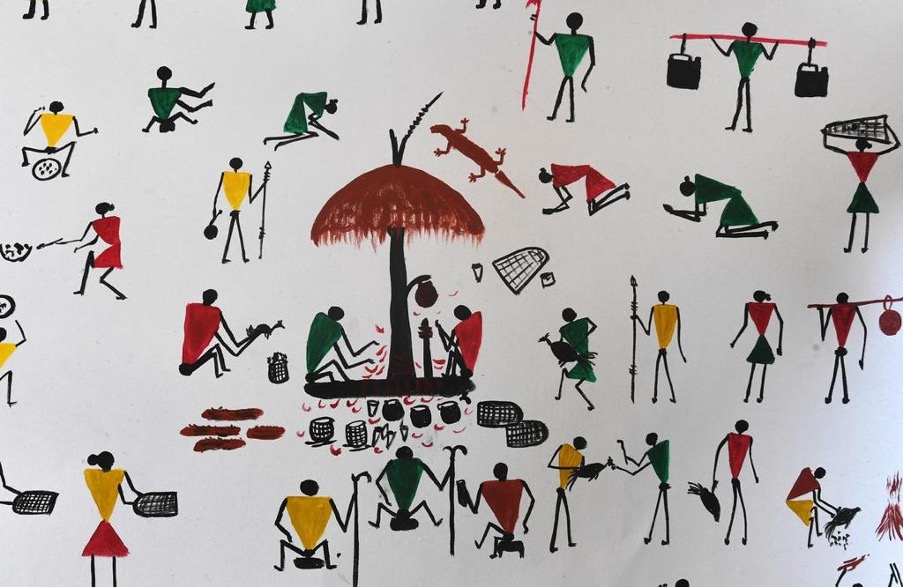
The storyline for making a 33-minute documentary covering the entire episode of the Rampa Rebellion has been developed, and information on various tribal freedom movements in Andhra Pradesh, Telangana, Chhattisgarh and Odisha has been gathered. These documentaries would be screened in the 300-capacity amphitheatre being constructed at the museum complex.
The museum complex will also have cafeterias on two floors, souvenir shops and replicas of tribal huts and articles reflecting their traditions and culture. Though the timeline for completion of the museum project is November 2023, heavy rain, non-availability of manpower and technical issues have resulted in delays. However, at present the work is progressing at a brisk pace, and we expect to complete the project by April 2024.
An Ode to Savara Tribal Art
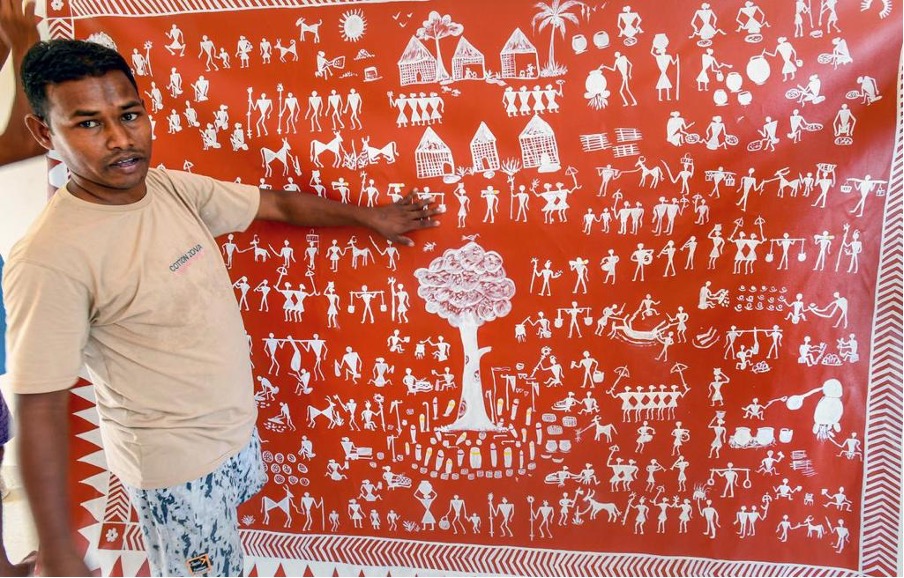
On a huge canvas spread across the wall of a room, Savara Raju paints a scene from a unique festival celebrated in his village to worship the forces of Nature, before the fresh harvest is taken home. Beside him are four others from his community who depict other village scenes through figurative artworks in each corner of the canvas.
Savara tribes of the Addakulaguda village in Seethampeta mandal of Parvathipuram Manyam district in Andhra Pradesh are one of the handful of artists who still do the Savara artwork, a remarkable form of tribal art that has its roots in the indigenous community of this region. These tribal designs are known as Ideesung or Edisinge, literally meaning ‘what is written in the house’.
Savara paintings are not merely decorative; they hold deep cultural and religious significance for the community and often depict themes related to Nature, spirituality, and the tribal way of life. Now, there are just about 15 artists left who do these paintings.
The Savara paintings incorporate elements such as animals, birds, trees and flowers into their artworks. The motifs are not only aesthetically pleasing, but also carry symbolic meanings that are often rooted in the tribe’s spiritual beliefs and folklore. One of the scenes depicted in the canvases is of the Aagam Panduga (a festival observed in memory of the departed souls and forefathers). This is a unique festival celebrated once in a decade when the entire community comes together for a week-long celebration.
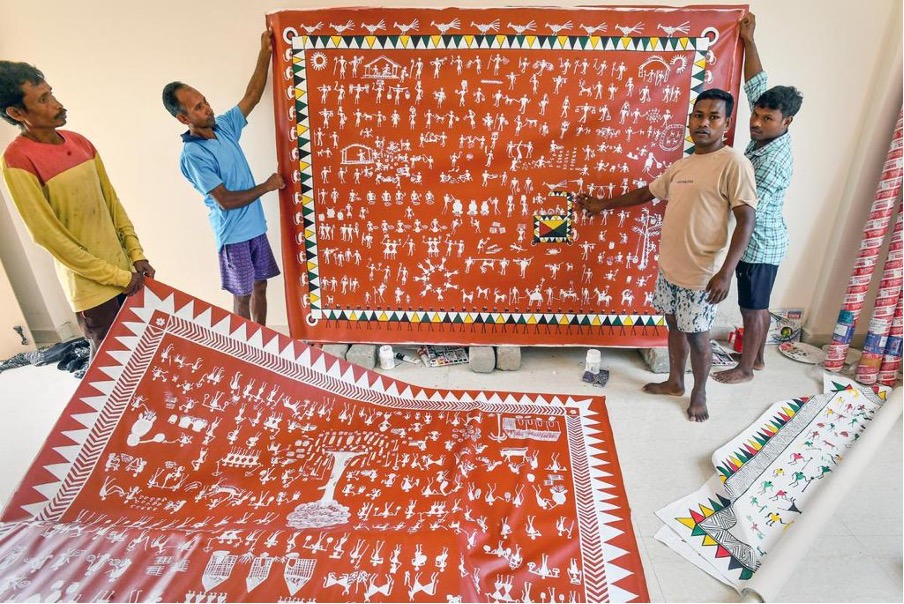
The tribe’s association with Nature and wildlife is reflected in the drawings on the mud walls of their houses by using vermilion, rice powder and charcoal. The canvas for the Savara artworks is typically prepared using natural materials such as leaves, tree bark, or cloth. The colours are sourced from minerals, stones and plants, creating a stunning palette of earthy tones.
The painting process itself is meticulous and time-consuming. The brushes used by artists are made from animal hair or bamboo to apply the pigments. Intricate dotting and linework techniques are used to create the fine details and patterns that are characteristic of Savara paintings.

Tribal artists from 11 States are being invited in batches to complete their works at the TCRTM before they are transported to the museum in Chintapalli. Next month, the Jatapu tribes will be coming down to Visakhapatnam from Parvathipuram Manyam district.
Read Also:

Contributor




